Would wood be good?
As we strive for a transition to a green future, we’re asking “would wood be good” to help us build everything from better buildings to more insulating windows, from steak-cutting knives to nano-engineered, biodegradable glitter. Plus, in the news: as Covid cases take off again in Europe, we review the situation here in the UK; also, making strawberry smells with mushrooms; and breakthrough textiles that cool you down when the sun shines on them.
In this episode

01:06 - Does the UK need COVID passports?
Does the UK need COVID passports?
David Matthews, University of Bristol
Covid cases across the European continent are surging to the extent that some countries are resorting again to drastic measures to control outbreaks. The Netherlands has imposed new lockdown restrictions; in Ireland curfews on pubs, clubs and restaurants have been reintroduced; and in Austria, Covid vaccines will be made mandatory. So how are we faring here in the UK, and should we be following suit, or should we hold our nerve? David Matthews, a virologist at the University of Bristol, spoke with Chris Smith…
David - Currently, I think we're in a good place. I'm very optimistic. We have a highly vaccinated population and coupled with that, we've had quite a lot of spread which acts as a booster to people who are vaccinated. And then of course, we've got the booster program as well, which will boost immunity of people who've not been infected but have been vaccinated. So I am optimistic. We're starting to see a decline in cases and deaths slowly. So I do think we are hopefully turning the corner.
Chris - Well I share that optimism, but I'm slightly confused by the headlines that we're being assailed by, because if you look at the vaccine uptake rates, we're at nearly 90% of the population over 12 have had at least one dose of vaccine now. So have we really got much ground to gain still by continuing to push on the vaccine front? Do you think that the 10% are actually going to go across the line here?
David - I don't think they're going to go across the line without a lot of help from everybody else. I don't know why that 10% are resisting, but I think we need to spend a lot more time working on that problem and persuading those people of the benefits of the vaccination and helping them to understand, or maybe backtrack from earlier positions they've taken and now feel slightly awkward about changing their minds. We need to work on that because if we were to do that, you would basically half the number of people in hospital and on mechanical ventilation beds in a single go if everybody in the adult population was vaccinated, and that would be a huge gain just by persuading the last 10% who for whatever reason haven't taken the backseat so far.
Chris - Is that the statistic then, that half of the cases we're seeing needing the most help in hospital at the moment are unvaccinated?
David - Almost. So I think the last time I checked, it was something like two thirds of people on mechanical ventilation beds needing additional help in hospital are unvaccinated. If you're vaccinated that reduces the chance of you ending up in that situation by about 80-90%. So a very rough top-of-your head calculation tells you that that effectively leads to a halving of the numbers. We'd go from 1,000 people a day on mechanical ventilation beds to 500. And that would obviously mean that we'd be much, much further away from the prospects of lockdown.
Chris - What's your take on the fact that Northern Ireland is moving towards introducing some kind of vaccine passport system? Is this vaccine passport system actually worth pursuing?
David - I think a vaccine passport, if it helps to persuade people to get the vaccine, then it's a good thing. We are in uncharted territory. I would rather we persuade people rather than compel them, but I do see the merits in compelling people, I really do. The numbers, as we said earlier, they speak for themselves. Two-thirds of people in the hospital in serious conditions right now were unvaccinated. And the NHS, as we know, has much, much better things to do with its time than spend time treating people who turn down a free, safe and effective vaccine.
Chris: - But that does mean that we're potentially foisting additional burdens on 90% of the population, whereas only 10% of the people who actually are the cause of all that.
David - Absolutely, and that's why it's a frustration. I think if we were going to introduce vaccine passports for myself, if I was making these decisions, I would've made the decision to do that before the summer, while we were still in lockdowns, so that people got used to the idea of some freedoms but some restrictions still, rather than letting everybody go out and enjoy their freedom and then start to put restrictions back on. I think we have missed the greatest window of opportunity by not having a vaccine passport plan at the very beginning of the summer. I'd rather, we had a strong and concerted campaign of persuasion talking to people who are vaccine hesitant to try and understand their fears, allay those fears, and show them that they really should change their mind now and get jabbed.
Chris - Do you think that we're actually probably at the point where we should begin to say to people, 'we need to get our confidence back and get back on our horses'? Because actually if one compares what would happen with the flu around this time of year and going into winter and the mortality costs the NHS impact, we're not far removed. Now we've got COVID vaccines from what the flu does to us. Are we?
David - We're not very far removed and I think that alludes to another point, which I think people are not really thinking about much and not thinking through properly. Everybody on this planet, all seven billion of us, will have their day with this virus one day or another. Be it this winter or next winter or the winter after that, there's no dodging this virus now. You will meet it. The only question is, do you want your immune system to meet this new virus trained or untrained for the encounter? And if you want to meet it trained and ready for the fight, then you need to get vaccinated. This is a permanent addition now to the smorgasbord of respiratory diseases. I think with vaccinations and exposures over time, it will become another common cold and not a dangerous disease as it is right now. But yeah, I think we're approaching the point where it will be like flu or respiratory syncytial virus or actually possibly even milder than that and just like the other human coronaviruses.
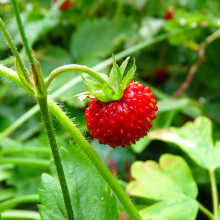
06:44 - Making wild strawberry smells from fungi
Making wild strawberry smells from fungi
Holger Zorn, University of Giessen
Now, scientists are gearing up to swap skilled chemists for fungi in a lab in Germany! Well not quite, but they have stumbled on a strain of fungus that, when grown on certain forms of plant waste, can break down the waste into a suite of chemicals that smell just like wild strawberries. The rationale for this work is that, while shop-bought strawberries taste great, many people think wild strawberries taste even better, because they have a stronger, more floral aroma. But, sadly, wild strawberries are so small that it’s not viable to extract useful amounts of their flavour compounds from the fruits themselves. Instead this means we have to rely on artificial flavours, and this comes at a cost both financially and for the environment. Fungi, of course, work for nothing! Sally Le Page spoke with Holger Zorn from the University of Giessen to find out more...
Holger - Mushrooms are living in completely different environments. So they have the enzymes to break down almost each and every organic material. And that gives them the opportunity also to modify substances that are already present in the starting material to release pleasant or sometimes also unpleasant flavour compounds.
Sally - How did you test which fungi make the best smells?
Holger - We grew the fungi just on a plate, on the pomace of blackcurrant and we just smelled every day to see if a pleasant flavour developed or not.
Sally - So you're growing these fungi on this blackcurrant pulp. Where does that come from?
Holger - From the juice processing industry, just from blackcurrant juice production.
Sally - Why are you using that, of all the things you could be growing your fungi on?
Holger - It's a quite sustainable approach. This material is typically just discarded and of course we know that a number of potential potent flavour precursors are still present in the material. So in general, though it is currently discarded, it's a valuable material and we just want to make use of that.
Sally - So you're adding this library of fungi to this blackcurrant pulp. How did you work out which ones smell of wild strawberries? Is it just a matter of smelling them or is it a bit more high-tech than that?
Holger - The first step of course is just smelling. Our nose is by far the best instrument we have with us if we are talking about flavour compounds, and what we also have in our institute is a couple of well-experienced PhD students and post-docs that, in a panel, evaluate the flavours. For this fungus, all of them agreed that it's highly interesting and all of them said, 'oh, that's just like wild strawberry'. Of course, in the next step we use highly sophisticated analytical techniques, including gas chromatography, and also sniffing gas chromatography, which means that we have a human nose as a human detector coupled to a chemical machine.
Sally - You say 'a human nose'. This is attached to a human, so you have a person attached to the machine?
Holger - Yes. It's not detached from the human. The person is still behind the nose.
Sally - I just love the idea that the best way of detecting these compounds is still just to sniff them. I'm sure that in chemistry at school I was told not to go around sniffing random things in the lab.
Holger - Yeah. That's different in food chemistry. Of course we each and every time use our nose to detect interesting things in nature.
Sally - So you didn't set out to look for a wild strawberry smell. You were just like, 'let's put these fungi on this blackcurrant waste byproduct and see what happens.' And it just so happened that one of them was wild strawberries.
Holger - Exactly. That's just what happened. We didn't deliberately search for a wild strawberry flavour. That's just what came out.
Sally - Was it more than one fungus that made this smell or was it just the one particular one that happens to smell like strawberries?
Holger - We had several fungi that produced interesting and pleasant flavours, but this one, this Wolfiporia cocos was the only one that produced this wild strawberry type flavour.
Sally - And what does that fungus look like? What does it do in the wild?
Holger - In the wild, it lives in trees and it looks a bit like a coconut.
Sally - Does this coconut fungus smell like strawberries in the wild when it's growing on wood?
Holger - Not at all. It only smells like strawberry when you grow it on this blackcurrant pomace.
Sally - And what are the benefits of making flavours using fungi over the traditional chemical routes?
Holger - One benefit is that these types of flavours may be labelled as natural flavour compounds, as they are of course made by nature. So it makes sense to label them as natural. And the second aspect; the production of these bioflavours is much more sustainable than traditional chemical synthesis.

12:03 - Smelling babies' heads alters aggression
Smelling babies' heads alters aggression
Noam Sobel & Eva Mishor, Weizmann Institute of Science
When we think of a newborn baby, often their smell springs to mind: it’s a distinguishing feature. And perhaps that odour has a specific purpose. Noam Sobel and Eva Mishor from the Weizmann Institute of Science in Israel, have reason to believe that smell is something not to be sniffed at, as Harry Lewis has been hearing...
Noam: You know, there's a term from German zoology; umwelt. Umwelt refers to the primary perceptual world an animal lives in. So granted, human's umwelt is visual and then auditory. Now that is not true for many other mammals. If you would ask your dog or your cat, they would certainly give up vision and audition before they would give up olfactions. So animals differ in that way and yet for humans, even though it's not the primary sensory aspect we use to perceive the world, it's still super, super important. Our nose guides very, very important decisions in our lives.
Harry - Does it affect then, the way in which we socialise as well?
Noam - For sure. We were contacted by colleagues from Germany who studied chemosignalling, not in humans but in mice. And that is the communication using chemicals, using body odours. We studied this quite extensively. They identified a specific molecule hexadecanal, and we'll call it 'hex' from here on just for convenience. So they identified hex as a molecule that's emitted primarily in the faeces of mice and has social influence in mouse behaviour. Or put in simple terms, it makes mice chill. Now researchers went on to identify the very specific olfactory receptor that responds to hex and moreover, they then observed that this particular receptor is highly conserved evolutionarily. That is that you see it or it's homologues in lots and lots of mammals, including humans. So they actually sent us a bottle of the stuff by mail and it said 'we think it's going to do something in humans because it does this and this in mice. And we think this is highly conserved across mammals.'
Harry - And thank goodness they did. How does one even go about testing using this hex that's arrived in the post to see how aggression changes?
Eva - So aggression is a social behaviour. We brought participants to the lab. We had to make them frustrated.
Noam - I think we made people angry more than we made them frustrated.
Harry - I imagine you're very good at this now, but how do you two make people angry?
Eva - We asked them to reach cooperation with someone else, which was in fact a computer algorithm and not a very nice computer algorithm. So here we told them. 'Now it's a completely different task. This task is a time reaction task, just press as fast as you can. But then if you press faster than this other participant, you get to noise blast them.' Then we just provided an outlet.
Harry - I've got a little clip of the sound actually. So let me play it for you at home.
[sound plays]
Harry - It's a pretty grating sound isn't it? What do you find?
Eva - So when men were exposed to hex, it was a small effect but incredibly consistent. They used 'noise blasts' that are lower in their volume, like less severe noise blasts. But to women, when we're exposed to hex they use more severe noise blasts.
Harry - Why is it that hex has this effect? Do we have any idea?
Noam - Typically in the animal kingdom, definitely in the mammalian kingdom and sadly also in humans, paternal aggression and male aggression is often sadly directed at offspring. By contrast, maternal aggression is typically protective. So if you are an offspring, you have a vested interest in making your mother more aggressive and then making your father less aggressive.
Harry - An interesting hypothesis, 'the smellier your baby, the more aggressive the mum and the more chilled out the dad.'
Noam - The final icing on the cake here that I should add. We went to a paper that was published just a few years ago by a group out of Japan. So this was really cool because it was hypothesis driven. We came to them and said, 'Look, we're expecting to find hex here. And lo and behold hex was the most abundant, semi volatile they found in heads of babies. So this came full circle, because not only do we hypothesise that it should be there, but it, in fact, is there at very high levels?

17:24 - Nano-processed silk leaves you feeling cool
Nano-processed silk leaves you feeling cool
Shanhui Fan, Stanford University
Remember that bit in Back to the Future when Marty McFly gets soaked, but his self-drying jacket kicks in and saves the day? Well we’re not quite there yet, but scientists have now successfully used nanotechnology to produce a form of silk that gives you, in their words, wearable air-conditioning! Exposed to direct sunlight, it actually keeps your body cooler than the surroundings by using nanoparticles glued onto the strands of the silk to bat away ultraviolet rays that would normally heat up the material and the wearer. By radiating your - and the shirt’s - heat off into space, it cleverly means you’re cooler than the surrounding air and not just because you look good! Stanford University’s Shanhui Fan told Iacopo Russo how it works...
Shanhui - Well, we have demonstrated is that nano-processed silk when placed under direct sunlight by itself can reach a temperature that is 3.5 degrees Celsius below ambient and therefore a person wearing such a nano-processed silk in an outdoor setting is essentially wearing his own air conditioning.
Iacopo - So how did you treat the silk?
Shanhui- Native silk absorbs ultraviolet light absorption of ultraviolet light gives rise to heating of the textile. We introduced aluminium oxide nanoparticles into the silk. A nanoparticle just looks like a little ball, except they are very, very small. The nanoparticle that we put in is designed so that it reflects strongly the ultraviolet light.
Iacopo - How did the nanoparticle stick to the silk?
Shanhui - We put a chemical bonding agent to ensure that the particle connected to the protein in the silk in a strong way.
Iacopo - So they're not just going to be washed away after a cycle in the washing machine?
Shanhui - In fact, we did many cycles in the washing machine and then confirmed that the particles are still there after many washing cycles.
Iacopo - Okay. That's good. So now we've got our engineered silk. How did you measure its cooling properties?
Shanhui - We do two measurements. In the first measurement we simply take a silk, put it under the sun and measure its temperature. In that case we see a temperature that's about 3.5 degrees Celsius below the ambient air temperature. The next thing that we did, which is to try to simulate the silk when a person is wearing it, is that we place this on top of a artificial skin with a heat source to simulate the thermal property of the human body, and put it outside under the sun. And what we see is that the nano-processed silk has a temperature that's about 8 degrees. Celsius below that of the native silk.
Iacopo - Right. Just to clarify, if you put a piece of silk or cotton out in the sun, it will usually be hotter than the air around it, right?
Shanhui - Yes. And in our nano-processed silk its temperature after is colder than the environment.
Iacopo - Amazing. And are there no other wearable materials that can currently do that?
Shanhui - No. So this really is quite an unusual textile that we have created.
Iacopo - Could this process be scaled to make T-shirts?
Shanhui - I believe so. In fact, we have a picture of a shirt made out of the silk. You certainly can make that kind of scale.
Iacopo - I guess this means if I wear this T-shirt next summer, I won't have to use the air conditioning as much. So I will save energy essentially.
Shanhui - That's right. But also in an outdoor situation, where air conditioning may not be readily available, you will actually feel cooler.

21:31 - Flying a bit less may be enough for climate
Flying a bit less may be enough for climate
Milan Klöwer, University of Oxford
When world leaders gathered in Glasgow for thejust recently ended COP26 summit in Glasgow, something that got some of the delegates into hot water was how many of them got there: most came by air. And, of course, flying releases significant amounts of greenhouse gases, which is why we’re repeatedly being reminded that even cheap flights actually cost the Earth in climate terms and we should try to minimise them. But rather than go cold turkey and cut flying dramatically, Milan Klöwer, from the University of Oxford, has found that with just small reductions in flights each year, we can actually neutralise aviation’s warming effects, as Verner Viisainen found out...
Plane instructor - Ladies and Gentlemen, may I have your attention, please as we go through the following safety instructions? Make sure all seats are in the upright position and trays are put away before we take off.
Milan - For many people, flying is the biggest contribution to global warming. COVID really forced us to rethink how important is it to fly. Suddenly 10 days quarantine for everyone, right? People really thought about whether it was worth it. And in our study, we find that an annual decrease of 2.5% in terms of flights would limit aviation's contribution to global warming with an immediate effect. It's a bit tricky to understand why this is because usually we think in terms of carbon emissions and carbon emissions mean that the more we emit, the more increases the warming. However because of the non-CO2 two effects that aviation contributes aircraft engines at the altitude at which they fly, they also emit nitrogen oxides. Nitrogen oxides then start triggering chemical reactions. One thing they do is they decrease the amount of methane that actually has a tiny cooling effect. They also interfere with the ozone, that has a warming effect. And one of the major ones is the creation of these condensation tracks that we can see, they can basically form cirrus clouds. And these cirrus clouds then act as a net warming. If you take all of these effects that are not the carbon dioxide emissions together, we usually call them non-CO2 effects, that increase the warming that is caused by CO2 alone by a factor of two. These effects decrease over time. Meaning if you fly less than in the year before this effect slowly decreases and balance the increasing CO2 emissions. At this rate that we've calculated, the -2.5% per year, we actually find that there's this balance of the CO2 and the non-CO2 effects such that there's no further warming introduced.
Verner - Does that mean we would have to stop flying completely?
Milan - No and this is exactly the point that we want to raise. The only thing that we need right now is a change of direction. If we get a change of direction. So we slowly decrease, then the additional warming that is caused by aviation is halted. And I think this is a very important message.
Verner - Could you describe your method?
Milan - Basically, we connected the whole dots between knowing what the fuel consumption is in a given year down all the line to what is the temperature increase that is caused by these emissions. And because we've connected all these dots, we also assume for the future, a given consumption of this jet fuel. And we can see what will happen if it increases or if it decreases,
Verner - Could we theoretically achieve the same reductions in emissions, through technological advances?
Milan - At the moment, it is not possible because we do not have alternative low carbon fuels available. The production of these sustainable aviation fuels, even if they were sustainable, is currently not available at scale that is needed. So before the pandemic, annually every day one billion litres of jet fuel was burned. Of course people also talk about electric aeroplanes, but at the moment the batteries are just too heavy and evening the next decades, if something like that will be available, it's only very short haul flights.
Verner - You mentioned this 2.5% reduction in flying for a year. What would this look like for the average person in one of the richer countries?
Milan - At the moment it wouldn't change that much because the global levels of air traffic during COVID decreased about by a factor of two. What I often hear is these messages 'in the future, I'll try to fly half as much as I did before.' What physically is needed is a reduction of 2.5%, which is obviously much less. Technically what we need is general awareness that we have to distinguish between necessary and unnecessary flights. So everyone has to ask themselves this question. 'Is it really important that I fly? Or can I replace this flight? Can I combine several journeys into a single one?' The only thing that will really have to change is this idea that the whole aviation sector should grow and grow and grow.
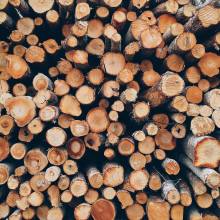
What is 'wood'?
Iacopo Russo, one of our interns at The Naked Scientists, walks us through the nearby forest to the Naked Scientists office while explaining various definitions of 'wood'.
Iacopo - When I'm deep into a project and I can't see the wood for the trees, I like to go for a walk to clear my head. The Naked Scientist office is based in Maddingly, just outside Cambridge. We're lucky enough to have a patch of woodland just across the road. It's a crisp autumnal day. There's leaves everywhere on the ground and I'm surrounded by trees, which as we all know are made of wood. Of course we're familiar with it, but what exactly is wood? Well, it's made of three main parts, cellulose, lignin, and hemicellulose. Cellulose is a chemical made out of sugar molecules and makes fibres that are very strong in tension. These fibres are like chains, which means if you pull on them, they will resist. But if you try to squash them, they will crumble. This would be very bad news for the tree. So to prevent it, trees strengthen their wood with lignin, a stiff polymer with a messy structure that stops the cellulose chains from collapsing under their own weight. Lignin is also what gives wood it's brown colour. Finally, to stick the two together, there is hemicellulose, which gives wood flexibility.
To the right of me here, there's a beech tree with its lovely red and yellow leaves. And to the left is a spruce which will hold it's needle leaves all winter long. Deciduous trees like beech produce what we call hardwood. Whereas coniferous trees like spruce make softwoods. These two groups of trees have been evolving separately for hundreds of millions of years, so their woods have very different structures with hardwoods being a lot more complex. However, just to confuse things, not all hardwoods are hard and not all softwoods are soft. Balsa wood, which is a very soft wood used to make model airplanes, is technically a hardwood. Whereas yew trees, which you often see in graveyards, give a very hard wood, but are categorized as softwoods.
Ahead of me I see a tree that's been cut down with the characteristic rings that give wooden furniture the beautiful grain with dark and light lines. This is all to do with the amount of lignin, which you may remember was the brown bit in wood and is found on the outside of the wood cells. In spring and summer trees grow fast and the cells are large to allow nutrients to travel from the roots to the canopy. This means there's less space for lignin. In autumn and winter trees grow more slowly. Being strong and standing up to harsh weather is more important to them, so a lot of lignin is produced, which explains the darker colour.
I've always found baffling about wood is that it may look sturdy, but actually at least half of a tree is made from the air. Thanks to photosynthesis, trees transform carbon dioxide from the atmosphere into the sugars that become the wood. And get this, in order to grow 1 kilogram of wood, a tree has to draw down 1.6 kilograms of CO2. That's why everyone talks about trees as one of the main solutions to oppose climate change. But we have other uses for trees beyond carbon sequestration. Of course, it's easy to think of houses made of timber and of wooden furniture. But in fact, in the USA half of the harvested timber is used in wood pulp and paper production. And even in places like Europe, a quarter is burned as fuel. I've got to get back to the office now, but it does make me think, are there better ways we could be using this marvellous material?
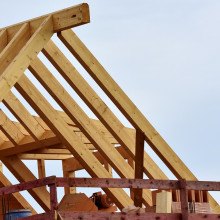
32:05 - Buildings are getting the wooden tree-tment
Buildings are getting the wooden tree-tment
To build tall buildings like the skyscrapers you see in London, the materials we use by far the most are concrete and steel. But more and more, architects are now using this special form of wood called cross laminated timber, or CLT, to make structures that are taller and taller. Iacopo Russo went to visit Dave Lomax from Waugh Thistleton Architects to have a look at what is going to be the tallest office building made of timber in the whole of London...
Iacopo - We're in Rivington street and I've just had the first sight of the black and white building.
Dave Lomax - The basic principle of the building is that we're providing six floors of new office space in the middle of the street, a really tight little site with a railway on one side and small roads and all those sorts of things. And the principle here is that we've chosen to build the building in a way that is better for the environment. So instead of just doing the normal thing, going for a concrete frame and pouring lots and lots of grey stuff into the ground, we've elected to build it out with pieces of wood.
Iacopo - I can see layers in the wooden planks forming the floor. What kind of wood is that?
Dave Lomax - That particular material is one called LVL and that stands for Laminated Veneer Lumber. What that is, is a whole series of hundreds and hundreds of veneers, veneer meaning specifically that it was peeled from the tree rather than cut from the tree. That product is incredibly strong and the species that goes into that is beech, so those are hardwood elements, that means that they're much stronger. With a really strong material like L.V.L. Made from beech, we can have smaller columns, smaller beams.
Iacopo - We just entered the construction site. The first thing I noticed as I entered the building is the smell. It's very nice, woody and also construction smell, I guess.
Dave Lomax - Absolutely. The way I describe it to people is my dad's woodwork shop. Typically this is a building made out of beams and columns. So that's very like a steel structure, slightly different to a usual concrete structure. A concrete structure would normally have columns, just needs a flat slab. Now the centre of the building deals with the horizontal movement, all buildings move horizontally with the load of the wind, if they don't have something to stop them. Here, what we use is CLT. CLT is quite thick, you can see them on the edge there. Average everyday chunks of spruce cut into planks, and then laid in five layers, each layer at 90 degrees to the next. And that allows it to work a bit like the slab you'll see in a concrete building. It spans in two directions.
Iacopo - I suppose fire is one of the biggest concerns that people have with timber. Is this building going to be safe against fires?
Dave Lomax - All building materials suffer when there is a fire, when we have a piece of steel and we expose it to 300 degrees of temperature, it also is very likely, very quickly to start to fail. But we do things to protect it from burning in a way that is dangerous to those fighting the fire or those being in the building at the time. So our approach to wood is pretty much the same. We know exactly how timber performs, how long it takes to degrade. We know that this building can be on fire in certain places for a certain amount of time, which should be long enough for everybody to evacuate the building and, if they decide to do so, for the fire brigade to put it out.
Iacopo - How long is this building gonna last?
Dave Lomax - It's a really sensible question. I'm going to give you the politician's answer first. It comes with a warranty for 60 years. There's absolutely no reason wooden buildings can't last forever, we just need to look after them. So the principle with wood is, it's great if it gets wet and then dries out again. It's only when we start to trap water in certain places that we start to get problems, because then we get a cycle of mould and fungus growing and rot. All of this wood is really, really carefully treated in the way it's manufactured. It arrives to the site at 14% no more moisture content, that's monitored. Then we test it again before we put things like waterproof membranes on the roof, so that we know we're not trapping water inside. But beyond that, belt & braces. You may even see some, when we go downstairs, there are some little tiny holes in the roof.
Iacopo - So we got close to a square column here and we're just going to touch it to see what kind of sound it makes.
Knocking - [knocking on column]
Iacopo - I was expecting it to be a lot more hollow as a sound. Instead it's very solid.
Dave Lomax - This material particularly on the CLT panels, you can see they've got five or sometimes seven, sometimes three thick layers in them. If you see the surface of this material here, I mean, we couldn't count them. There's probably a hundred layers in that column that you can count right now. So what we've got is lots and lots and lots of layers, all packed tightly together through the surface of the column.
Iacopo - What's gluing the wood together and the wood planks?
Dave Lomax - It's not a particularly technically complex glue, but the difference is that all of these parts are pressed together in a really big mechanical press. So that's either a hydraulic press or it's a vacuum press. And that happens in the factory. So it's not just the performance of the glue, which needs to be one that can absorb into the lignin, into the cell structure of the timber. It also needs that kind of high pressure applied to it to give you the really strong adhesion we have. The basic principle is sticky stuff, and pressure.
Iacopo - Do you think wood is a material for the 21st century?
Dave Lomax - I think it absolutely is. It's not the wood itself, the wood is no different, it's always been the same. But now these incredibly clever processes are working with a size and scale of material built to an incredibly tight tolerance in a factory in a way we couldn't have done even 40 years ago. That's why timber is the material of the future because we're able to use it in such innovative and safe and clean and tidy ways.
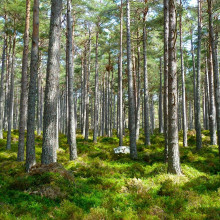
39:20 - Is it sustainable to build houses from wood?
Is it sustainable to build houses from wood?
Will Hawkins, University of Bath
Trees absorb carbon dioxide, so is it sustainable to be cutting down all these trees to put in buildings? Shouldn’t we be leaving them alive in the forests? Iacopo Russo put some of those concerns to Will Hawkins, a structural engineer at the University of Bath, who specialises in efficient and sustainable buildings...
Will - When we're talking about replacing most concrete and steel structures with timber, most people would agree that using timber is better than the alternatives.
Iacopo - But we often hear that planting trees can help oppose climate change because trees absorb carbon from the atmosphere, so they help offset the carbon we emit elsewhere. Can storing carbon in timber buildings also help oppose climate change?
Will - I think the way to think about this is the total benefit in terms of timber products can be thought of as the total amount of CO2 that's stored in both the forests and the products. By making buildings and locking away CO2, you're increasing the store in timber products, but you have to make sure that by doing that, you're not just creating a equivalent production in the forest. The key is to do this in a way that keeps the forest carbon storage high whilst creating new timber products and a new storage of carbon alongside it.
Iacopo - Is it better to store timber in buildings for the environment?
Will - It's better to use timber for products that are gonna last a long time. Buildings have a really good advantage in that respect compared to something like fuel or packaging. We also need to consider what that timber is displacing. So for buildings we'll be displacing steel and concrete, which we've already heard are quite highly emitting, but also we could be using that timber to replace fossil fuels, or we could be using it to replace plastic packaging. So it's not necessarily obvious. Timber is always doing good whenever we're using it by displacing something else, and it appears as though buildings are going to be one of the best ways that we can use it.
Iacopo - But at the same time, growing trees for that timber to store carbon in buildings requires land, and we already need land for many other things like growing food. Is there going to be a problem with how we manage land in the future?
Will - Our use of land is one of the key causes of biodiversity loss and if we use it for anything else, then something has to go. Usually that's the natural world. We always have to make a choice and make a compromise and unfortunately when it comes to timber evidence shows that the more productive or the more timber is harvested from a forest generally the lower its biodiversity tends to be. But timber plantations are often grown on less fertile soil, so upland areas. So there is scope to create new timber plantations in places that are not already that productive for agriculture.
Iacopo - I suppose one thing we need to worry about is what happens to timber buildings after they're demolished, what happens to the timber?
Will - The majority of timber waste in the UK is actually burned as biomass. It goes into producing electricity that offsets production from the grid, but also you're re-releasing that CO2 straight away. The rest is down-cycled into either chipboard or MDF or even animal bedding or compost. So again, we're going from timber structure, which can store biogenic carbon for a long time, into products that generally have a much shorter life and that biogenic carbon is generally being rereleased quite quickly.
Iacopo - There seems to be a lot of different aspects to consider, what would you recommend we should do overall?
Will - I think our first priority is to just consume less. We need to question whether we need new buildings at all and we need to reuse existing buildings as much as possible as a priority. Then if we decide that we do need a new building, the focus needs to be on material efficiency. There's ways that we can create buildings that use a lot less materials. We can make the spans shorter, or we can make clever shapes so that they're inherently strong and we don't need to use lots of material. Finally, the last thing to do is to replace the concrete with the timber, but we really need to make sure that we're using only the smallest amount of timber that we can get away with because those forests are already under pressure and wherever timber is used, it does good.

43:38 - Making colourful glitter from...wood
Making colourful glitter from...wood
Silvia Vignolini, University of Cambridge
Scientists are particularly interested in one ingredient of wood; cellulose. At the nanoscale, this material has incredible properties including bending light in a way that can give rise to amazing colours. The tiny pieces are called nanocrystals, and Iacopo Russo went to visit Silvia Vignolini, at Cambridge University’s Department of Chemistry, to see for myself how they are using nanocellulose to make glitter and pigments for cosmetics…
Sylvia - We are interested in cellulose because it's one of the two structural components together with lignin and while lignin is a polymer that has amorphous structure, the cellulose has a crystalline structure. And its crystallinity is what preserves as well, the original fibrillar type of architecture that you have in wood. This crystalline structure, it's important for the optical response because it imparts what is called the birefringence, but it's the way that interact with lights or birefringency means that the light can travel a different speed inside the structure itself and the traveling at a different speed is what is responsible of the structural colouration that we observe.
Iacopo - We're looking at a fume hood and there's some liquid inside, and a magnet is rotating around to mix it. What am I looking at?
Sylvia - You are looking at one of the processes that we have to do during the instruction of the cellulose nanocrystal. Because cellulose is something that you cannot synthesise, but you can only extract it from natural resources. We don't fully dissolve the structure of the cellulose, but you only remove the amorphous part until we get this nanocrystalline part.
Iacopo - So once we get that suspension, then what happens to it?
Sylvia - It can be used directly as an ink for printing into printers. We can use it to make larger laminate's of cellulose nanocrystal, we can use it to make other types of pigments. This is our starting material for a lot of our experiments.
Iacopo - Are there samples that I can have a look at?
Sylvia - Yeah. Let's go to the optics lab.
Iacopo - So we've just interrupted an experiment. Everything was dark in the room and I'm entering the optics lab. What happens to the nanocrystals once they deposit onto a substrate?
Sylvia - You have nanocrystal that are in suspension and depending on the concentration of the suspension, the interaction changes. If it's a really dilute suspension they don't interact. As soon as you increase the concentration, as soon as you force them to interact, reducing the volume of water, then you build up like a helical twist and having these different orientations is what creates the colour.
Iacopo - Okay. Let's have a look at some samples.
Sylvia - I'll want to show you a beautiful one even if the audience cannot see it, but you can see right. It's a really metallic colour and you think this cellulose is the same.
Iacopo - Depending on the angle at which we're looking at, I can see all colours of the rainbow.
Sylvia - This is essentially what is called iridescent. The colour changing function of the angle that you are observing. It's a characteristic of structural colour. Then we made it on this really large roll and deposited the large scale, and then it simply grinded.
Iacopo - It looks like glitter.
Sylvia - It looks like glitter. Depending on the size, the bigger they are makes them really glittery.
Iacopo - Okay. So that's the sparkly green and blue inside this liquid. But I can also see some bits of glass with a glittery substance on it. Some are red.
Sylvia - Essentially, it's the same of what you see here in the vial, but they spray deposited on a substrate.
Iacopo - It looks like a sky full of stars of different colours.
Sylvia - And then here, this one is multicoloured, but these other ones are also single colour. You see that they are all green.
Iacopo - And that's all to do with how the cellulose arranges in a different structure at the nanoscale, a very small scale.
Sylvia - That's true. The architecture is always the same. This helicoidal architecture combined with the birefringence of the cellulose is what interacts with the light and gets the colour. Then you can change the colour by changing some of the characteristics of the suspension. For example, adding salt, you can tune the colour, the other things you can tune the size of this particle when you grind it and then you have different types of effect, something that looks more homogeneous or something that looks more like glitter.
Iacopo - So what is the biggest advantage of using cellulose instead of currently used materials for pigments?
Sylvia - The main advantage is that you start with something that is the most abundant polymer that you have available on the planet. The fact that it's a biocompatible edible, and when you disperse it in the environment it has a really low toxicity or non-toxicity to different species. The convenience is just trying to have more sustainable components.
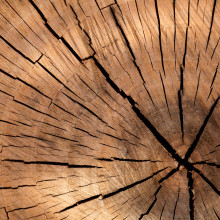
50:08 - Super wood! Windows and knives from wood
Super wood! Windows and knives from wood
Teng Li, University of Maryland
It sounds like we can build our flats from wood, paint the walls shiny colours with wood, all we need now are wooden windows and wooden cutlery. Which sounds a bit far fetched, but these have already been invented. Sally Le Page spoke with Teng Li, a mechanical engineer from the University of Maryland.
Sally - So how do you make wood transparent?
Tang - It actually has two steps over there. The first step is more chemical processing. You bleach the wood and then the wood it penetrated is the synthetic polymer, the resulting piece of wood is actually virtually transparent.
Sally - Amazing! And why do you want to make wood transparent? What's wrong with glass?
Tang - We have been using glass for many, many years in the windows and other applications, but glass has several disadvantages. For example, we know that the glass is very brittle. It can be easily shattered into sharp pieces. By contrast the transparent wood is much tougher than glass. Also the glass production in construction comes with a heavy carbon footprint, by contrast transparent wood is made from a sustainable and renewable resource with low carbon emissions and also has a better thermal efficiency.
Sally - So even with all of that bleaching and the resins you need to add, it's still better for the environment than glass.
Tang - Hopefully I think it has a very good potential in the future as a potential replacement for glass.
Sally - And you say it’s a potential in the future. How big are the pieces that we've got already? Is anyone making windows out of transparent wood yet?
Tang - Not yet. So far, I believe this is done at the lab scale, but the process I mentioned can be scalable to an industrial scale when it's getting to the commercialization stage.
Sally - Incredible. I can't wait to see it. I hear in your lab Tang, you have made a steak knife out of wood. What on earth gave you that idea?
Tang - Yeah. We have been working on exploring the new usage of wood. We have this process to make the wood 23 times hotter than the natural wood. Then we were scratching our heads to find a potential application of this and we realized that actually we use harder materials a lot in our daily life. For example dinner table knives, typically we use a stainless steel one and at parties we use the plastic ones. We were trying to make a super hard wood knife. It turns out that it's actually quite sharp, it's actually sharper than the typical dinner table knives we use.
Sally - Wait, a wooden knife is sharper than a steel knife?
Tang - Yeah. We measured the cutting force of the super hard wood knife and compared with the cutting force of typical dinner table knives made of stainless steel or natural wood or plastic ones, it turns out that the super hardwood knife has a smaller carding force.
Sally - I would never have believed that. What do you have to do to the wood to make it so hard?
Tang - It evolves in two steps. The first step is chemical processing as you mentioned in the earlier of today's program. We partially remove one of the components in wood, which is the lignin. In the second step, you can really densify the wood into a piece of material, which is much hotter than the natural wood.
Sally - When you've got your wooden knife, can you still stick it in the dishwasher?
Tang - Oh yeah, indeed. If you look around our kitchen, we have been using wood utensils, cutting boards, spoons, chopsticks, and they can be used multiple times. You can wash it in the dishwasher. It survives the usage over a long time and the durability of the super hardwood is actually better than the natural wood so we expect that this can be used for even longer time.
Sally - Amazing. I'm one of those people who buys cheap knives and they go blunt immediately. So it sounds like your wood one might actually be better. And then you've also been working on super strong wood. Can you tell me a bit more about that?
Tang - Yeah. So using the same process, you can make the natural wood more than 10x stronger than the original material. Also the resulting super strong wood is more light-weighted. For example, the strength of that super strong wood is comparable or even higher than some of the steels, but the density is six times lighter, which means that you are getting a piece of material, which is comparable to steel, but it's more light-weighted. So it actually leads to a lot of potential as a replacement for steel.

55:17 - QotW: Are there space traffic controllers?
QotW: Are there space traffic controllers?
Listener Matt wrote to us at the Naked Scientists to solve his cosmic conumdrumn, so we found Dr Chris Bridges from the University of Surrey and had Katie King interview him for the answer.
Matt - Early commercial flights were scheduled and had air traffic control, but pilots were allowed a fair amount of latitude in the early days, which resulted in some mid-air collisions. I was wondering, with three space missions currently converging on Mars, how do the nations involved avoid orbital collisions? Do this year of data? Do they have transponders or space traffic control? Thank you.
Katie - I spoke with Chris Bridges, academic at Surrey Space Centre in the University of Surrey to find out more about your question. Let's see if you were right. Do they share data? Do they have transponders or perhaps even space traffic control? Let's find out more.
Chris Bridges - So fortunately there are not many missions out on Mars. Only about eight or so missions are currently orbiting the planet. If we compare that with the 34,000 objects around earth, Mars orbits are practically empty. Each mission does indeed share data on position and speed and we call those the state vectors of the given satellite. This data is shared between all major agencies like NASA, ISA plus our own UK space agency.
Katie - You were bang on the money Matt. Congratulations. Nations do share data. But how is this data obtained?
Chris Bridges - For almost all missions we use something called 'The Deep Space Network', and that uses a transponder to take highly accurate radio measurements, to determine what we call the range and velocity.
Katie - Right again Matt. They do also use transponders much like aircraft send that position to air traffic control. Before answering your final question, though, I want to know how do we determine the position and speed of a spacecraft when it's so far away?
Chris Bridges - The actual thing that we're measuring is signal lag and the 'Doppler shift', which gives us a change in frequency. We use these to determine the distance and the speed around a spacecraft on Mars.
Katie - Much like when sirens whizz past you on the street and they start to sound different due to the 'Doppler effect', we can use the frequency of the radio signals to determine how fast these spacecraft are going. Okay Matt, the final question, can you get the hat trick? Is there a dedicated space traffic control?
Chris Bridges - We don't have big space networks. We rely on a combination of special messages and critically the operators actually share the information like GPS data. So we have to work together so that our spacecraft aren't on track for any collisions. Especially in low earth orbit, we use thrusters to maneuver away if we need to. We often budget for this and our missions.
Katie - So Matt, I'm afraid you didn't quite get the hat trick as that isn't yet the dedicated space traffic control team. But as the use of space is growing so rapidly, maybe it won't be long before one exists. Thank you to Chris Bridges for your answers and next week we will be answering Sarah's question of...
Sarah - Why do ant bites hurt so much?










Comments
Add a comment